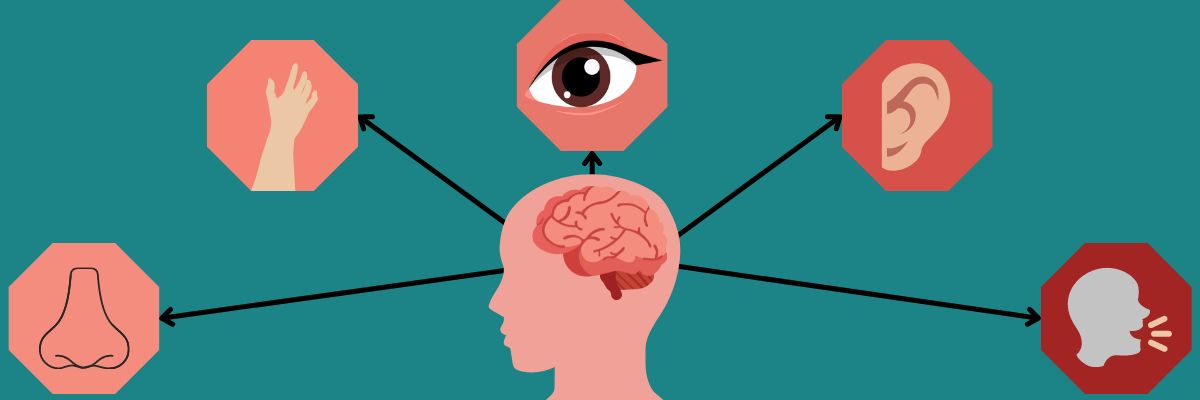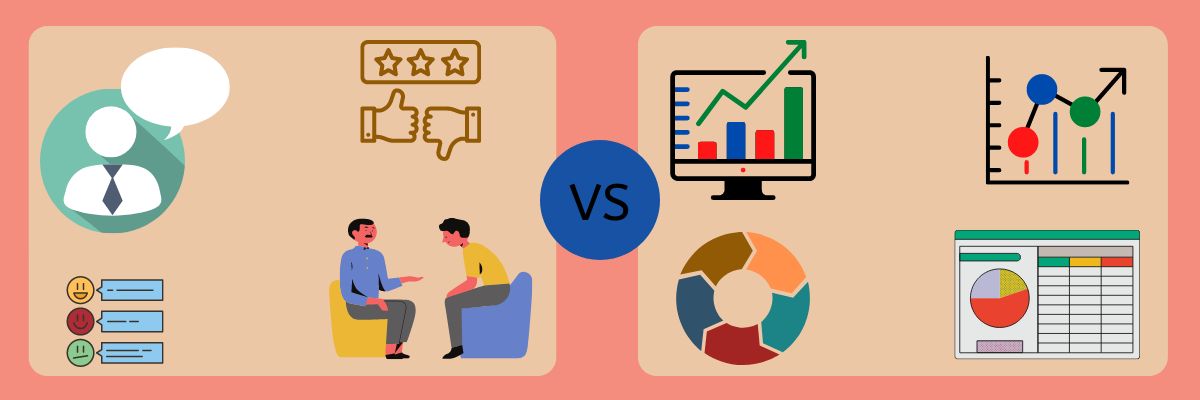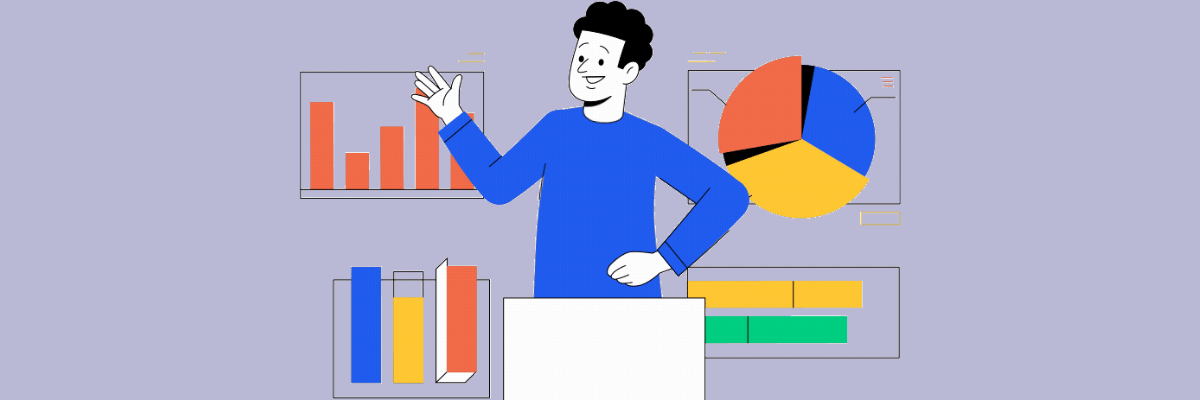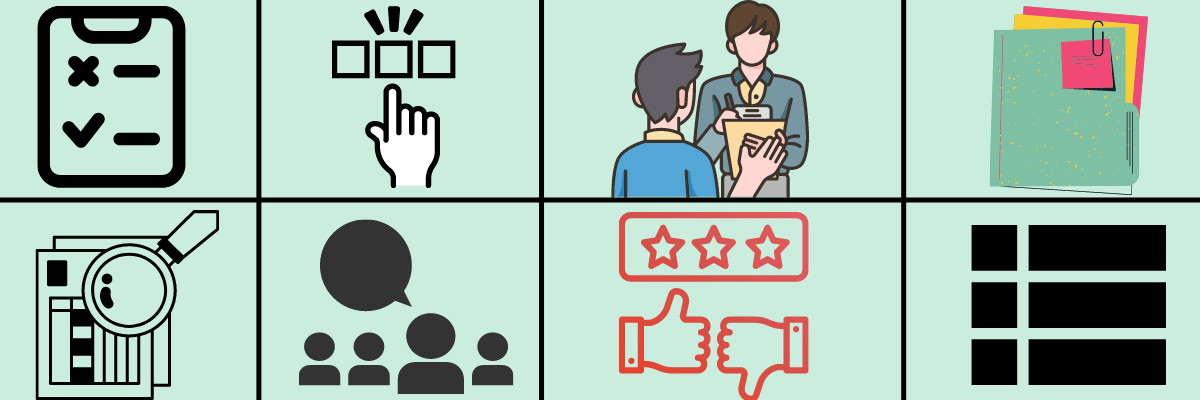Data analysis is a technique where statistical or logical methods are used to illustrate and evaluate data.
This analysis involves a complete summary of the information that is further used to collect and present the end result so that it communicates the essential findings or options.
But this process needs you to differentiate between the data you have collected. And to simplify the data analysis process, it’s essential to understand the two methodologies – qualitative data and quantitative data.
Qualitative and quantitative data is something that is created, observed, validated, and collected.
You can view the data in the form of figures, facts, measurements, records, notebooks, videos, images, etc., in digital or non-digital format.
However, there are many differences between the two. And to choose one among them in your projects, you must understand each of them separately and how they differ.
So, let’s learn about the differences between qualitative and quantitative data.
Qualitative vs. Quantitative Data: What are they?
To understand these terms better, first focus on this – the former is interpretive, exploratory, and subjective, while the latter is conclusive, objective, and to the point.
Qualitative Data

Qualitative data is simple information that can’t be measured, expressed in numbers, or counted. The information is gathered from audio, images, text, etc., and shared through visualization tools, such as concept maps, timelines, infographics, and more.
For example, when a user visits your website and adds some of the products into the cart but abandons the shopping cart, your work is to investigate ‘why’ and ‘how’, like why the visitor abandoned the shopping cart and how a user feels about your site or products. Here, “quality” is in the main frame; hence, you need to get insights from the qualitative data.
In the above example, you don’t need any numbers to know the reason behind such user behavior but to ask them about the cause and their experiences. In other words, qualitative data is a label or a term used to describe characteristics of certain things, such as labeling an ice cream flavor as chocolate or describing the sea as blue.
Qualitative data is a non-statistical form and is typically semi-structured or unstructured, which means this type of data doesn’t need you to obtain hard numbers through graphs and charts. Instead, they are characterized by their forms, labels, attributes, properties, and other identifiers.
It can be generated through documents, texts, video recordings, audio recordings, focus groups, interview transcripts, notes, and observations. However, identification numbers like driver’s license numbers or social security numbers come under qualitative data as they are unique and categorical to one person.
Examples: Golden knobs, smooth finish, deep brown, American nuts flavor, built in Italy, Green shirts, blue ocean, beautiful pictures, and so on.
Quantitative Data

Quantitative data is simple information that can be measured or counted in numerical values. This can be referred to as any quantifiable data that researchers use to get statistical analysis and mathematical calculations to make quality decisions based on the derivations.
These types of data answer questions like ‘how many?’, ‘how often?’ and ‘how much?’. Quantitative data can be easily verified and evaluated by using mathematical techniques. Let’s understand with an example:
A person asks the shopkeeper, “How much does that printer cost?”
It is a quantitative question to collect data like the price for different devices. Values are associated with the most measuring parameters like kilograms for weight, pounds, dollars for cost, and more.
Quantitative data is collected for statistical analysis via polls, questionnaires, surveys, etc. In simple terms, you can say the information that can be “quantified” is called quantitative data. It is structured in nature and can be calculated using statistics and reports, which means it is defined and rigid.
Quantitative data is much more close-ended and concise that can be generated through tests, surveys, experiments, metrics, market reports, and more.
Examples: Weight in kilograms, number of weeks in a month, height in inches or feet, distance in kilometers or miles, age in years or months, revenue in dollars, length in centimeters, and so on.
Qualitative vs. Quantitative Data: Differences

Qualitative and quantitative data – both have the same place in every field. To understand each better, we need to see where they differ according to their criteria, functions, nature, and more.
Let’s understand some basic differences first:
- The data in which the classification of objects depends upon the quality or attributes is called qualitative data. In contrast, the data that can be counted or expressed in numbers is called quantitative data.
- Qualitative data relies on understanding between persons, emotions, color, etc. On the other hand, quantitative data relies on values, where you will obtain the results in statistics for making decisions.
- In qualitative data, verbal information is collected, but in quantitative data, measurable information is gathered.
- Qualitative data develops an initial understanding, but quantitative data recommends a final action.
Until now, we have understood the main concept behind both data types. Now, we will dig into some key differences between the two.
Here we go!
| Criteria | Qualitative Data | Quantitative Data |
| Definition | Qualitative data analysis is a simple technique used to develop an understanding of social and human sciences to get the end result. | Quantitative data analysis is a technique used to generate hard facts and numerical information through logical and mathematical techniques. |
| Data | It contains data like religion, nationality, the color of certain things, taste, gender, and more. | It contains weight, mass, size, height, price, and more. |
| Approach | It follows subjective analysis, which is involved in non-statistical data that can’t be calculated. | It follows objective analysis that can be calculated easily through mathematical derivations. |
| Analysis | The analysis refers to why a development happens, how a user feels, why the cart is abandoned, etc. | The analysis here explains the number or quantity of development, like the cart abandonment rate. |
| Sample | Here, the sample is non-representative and small throughout the whole process. | The sample is massive and can be generalized. |
| Collection methods | Qualitative data can be collected using written documents, interviews, observations, etc. | Quantitative data is collected using experiments, interviews, observations, surveys, polls, etc. |
| Data type | It is text-based. | It is number-based. |
| Results | Results are aggregated for analyzing the data or simply conferred. | Here, results depend upon the variation through graphs and charts. |
| Elements | Words, objects, pictures, etc. | Numerical and graphical information |
Real-Life Examples

Example 1: (Office Space)
Office space refers to both data types depending upon the functions of each element.
Qualitative Data
- Large and spacious
- Great natural light
- Large pantry area
- Cool water fountain
- Eye-catching wall paints
- Nice picture frames
- Large space for indoor games
Quantitative Data
- 12000 sq feet of floor area
- Number of floors
- Number of windows
- Number of doors
- Number of LEDs
- Number of systems
Example 2: (Article on a website)
Qualitative Data
- Nature of article
- Quality of the article like spelling, grammar, punctuation, etc.
- How readers feel about it
- How well it describes the topic and terms
- Quality of videos and audio used
Quantitative Data
- Word count
- Number of images used
- Engagement like comments, page views, etc.
- Load time
- Number of leads generated
Example 3: (University Area)

Qualitative Data
- Large and dense trees
- Bright colors
- Next-gen architecture
- Smart lights and fans
- Large classrooms
- Cool projector
- Quality books
Quantitative Data
- Number of classrooms
- Number of blocks
- Number of AC vents
- A square meter of the parking area
- Classroom size
- Number of benches
- Number of floors
Qualitative Data Vs. Quantitative Data: Types
Types of Qualitative Data

Statisticians and researchers categorize qualitative data into three types:
- Binary data: When you refer to an item as good or bad, hard or soft, right or wrong, fresh or stale, etc., it is known as binary data. In other words, it is qualitative data that you can characterize through mutually exclusive traits, which means they cannot happen simultaneously. Statisticians use this data to create a model that predicts the nature of that item.
- Nominal data: It is also called labeled, nominal scale, or named data. This is a type of data that you can use to name something without mentioning any numerical value.
For example, if you form a group of items by color, you can directly label each item according to its colors. Researchers use these nominal data to differentiate between the set of information, such as color. This type can also be used by statisticians and researchers to create a multiple-choice survey to know which one is good.
- Ordinal data: Ordinal data is a type of qualitative data that is categorized on a certain scale or order. It is an essential step toward the collection of data.
For example, when a responder inputs the service happiness level on a scale of 1-10, it collects data according to the inputs. Here, there is no standard scale where the difference between each can be measured. Some examples are the Likert scale, interval scale, etc.
Types of Quantitative Data

Quantitative data is divided into two main types -discrete and continuous data. Let’s understand them one by one.
Discrete Data
Discrete data is the type of quantitative data that contains number counting only. This does not involve any type of measurement like length, weight, height, etc.
For example, number of students, number of days, number of ceiling fans, age of an individual, and more.
While identifying discrete data, you need to use several questions to differentiate like:
- Can it be counted?
- Can it be divided?
- Can it be measured?
And so on…
Discrete data is also known as attribute data that can not be broken into smaller parts. You can say it to be either countably finite or infinite.
Example: The countably finite data is the arbitrary set of A = {1,2,3,4,….,n; where n is a number less than infinity}. The countably infinite data is the arbitrary set B = { 1,2,3,….}.
Continuous Data
It is a quantitative data type that can be placed on a measurement scale, which means this takes on numeric values that can be broken into smaller parts. You can refer to continuous data as uncountably finite and uncountably infinite.
For example, the CGPA of students is measured on a 10-point scale. Here, you can say that a student can score between 0 to 10 points, including 8.5, 1.57, 4.65, 2.68, 9.8, etc. This data can be classified as uncountably finite continuous data since it has an upper and lower limit.
Similarly, you can take the example of uncountably infinite data. It is the set of real numbers, R = {….,-1,0,1,….}. In this scenario, the data has neither an upper limit nor a lower bound.
Continuous data is again divided into two types:
- Interval data
- Ratio data
Interval data is a simple technique that can be measured along a scale where every point is placed at the same distance from one another. On the other hand, ratio data is the extension of interval data. It has the ultimate use when we talk about the exact data measurement. Ratio data tells about the order, exact distance, and more.
Ways to Generate Qualitative and Quantitative Data

Before we go deeper into the different data collection methods for qualitative and quantitative data, let’s try to understand the types of data collection first.
Data collection methods are as follows:
- Surveys, questionnaires, and quizzes
- Interviews
- Focus groups
- Direct observations
- Documents
Data collection methods can be classified into quantitative and qualitative data types.
Qualitative Data Collection Methods
- Questionnaires and open-ended surveys: It is the most used method to collect or gather data through different questionnaires and open-ended surveys. It allows the respondents to give answers much more flexibly. It doesn’t contain any predefined answers or options that allow a user to write freely.
- 1-on-1 Interviews: This is also called a face-to-face interview which is used as a common type of data collection method for qualitative data. Here, you can easily gather data from the interview. This technique is specially used when you want to collect highly personalized data.
- Focus Groups: Focus group is also an interview method. But instead of a 1-on-1 interview, it carries a group discussion. Here, the resources are not limited in terms of money, time, etc. It comes in very handy.
For example, if you carry out a study on the rehabilitation of teenage drug users, all the members in the group have to be teenagers who are recovering from drug addiction. - Direct Observation: This is the most passive way of collecting data. The data collector takes the place of the participant, observes the setting thoroughly, and records the audio or video also photos. This leads to bias in nature as it involves direct observation.
Quantitative Data Collection Methods
- Online quizzes and close-ended surveys: This method is based on questions that allow respondents to choose from the options. It is divided into types – categorical and ratio/intervals.
Categorical questions can be categorized as dichotomous (yes or no), checkbox questions, and multiple choice questions. In comparison, interval questions consist of a Likert scale, matrix questions, rating scale, etc.
Advantages of Quantitative Data over Qualitative Data

Quantitative data has many advantages over qualitative data because you can measure and prepare a chart or report out of it easily. It also takes less time as compared to the qualitative data. This technique is used when you don’t know what to expect.
Let’s understand the advantages of quantitative over qualitative data:
- More scientific
- Control sensitive
- Less objective
- Focused
- Can deal with larger samples
- Arranged in a simple method
- Repeatable
- Relatable
- Structured
- Generalizable
- Consistent
- Fast and saves time
- Useful for quality decision making
- More acceptable data
- Highly reachable
- Can use random samples
- Doesn’t require direct observation
Conclusion
Qualitative data is difficult to analyze as compared to quantitative data. It uses common approaches like qualitative content analysis, thematic analysis, and discourse analysis. Quantitative data, on the other hand, is based on numbers or values that use SPSS, R, or Excel to calculate things like average scores, the number of times a particular question is asked, validity, etc. The results are reported in tables or graphs.
This post should help you understand the difference between qualitative and quantitative data and what to choose for which application.
Si quiere puede hacernos una donación por el trabajo que hacemos, lo apreciaremos mucho.
Direcciones de Billetera:
- BTC: 14xsuQRtT3Abek4zgDWZxJXs9VRdwxyPUS
- USDT: TQmV9FyrcpeaZMro3M1yeEHnNjv7xKZDNe
- BNB: 0x2fdb9034507b6d505d351a6f59d877040d0edb0f
- DOGE: D5SZesmFQGYVkE5trYYLF8hNPBgXgYcmrx
También puede seguirnos en nuestras Redes sociales para mantenerse al tanto de los últimos post de la web:
- Telegram
Disclaimer: En Cryptoshitcompra.com no nos hacemos responsables de ninguna inversión de ningún visitante, nosotros simplemente damos información sobre Tokens, juegos NFT y criptomonedas, no recomendamos inversiones

